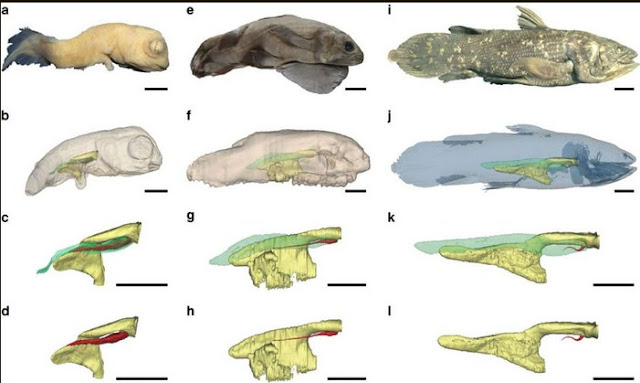When a fisherman pull coelacanth out of the sea in 1938, the researchers were surprised. Very flaky fish with a lobe that is leftover from the past, a time when dinosaurs roamed the earth. Scientists have coelacanth fossils that are hundreds of millions of years, and today it is believed that they all had died in the same incident that killed the dinosaurs.
But it turns out some of the coelacanth survive, and scientists have been studying these strange fish for decades. We know that these fish have peculiarities, hinged jaw, stay off the southeastern coast of Africa and in Indonesia, and eat squid and octopus. What we do not know is that this fish was also to have lungs.
In a study published yesterday in Nature Communications, the researchers found that, like its predecessor, namely their fossils, modern coelacanth also have a structure such as the lungs. Lungs are present in the embryo, but stop developing when the fish grow, so it is difficult to see unless you know what you are looking for (and you have access to a high-powered X-rays).
Scientists know that the fossil coelacanth has this strange organ but this time they thought the lungs was gone as species change over the years. Although coelacanth have lungs, it does not mean they can breathe with it. The authors found that the lungs of non-functional stretcher, or the rest of the organ.
 |
| Coelacanth vestigial lungs at different stages of development. |
Typically, the fish do not have lungs, they use gills instead. One of the few exceptions is the lungfish, which can modify their bladder (usually used for buoyancy) into organs of respiration
The researchers believe that the presence of the lung may indicate that the coelacanth ancestors may have lived in shallow waters with low oxygen levels, as opposed to the environment they prefer at the moment, namely the deep sea.















No comments :
Post a Comment